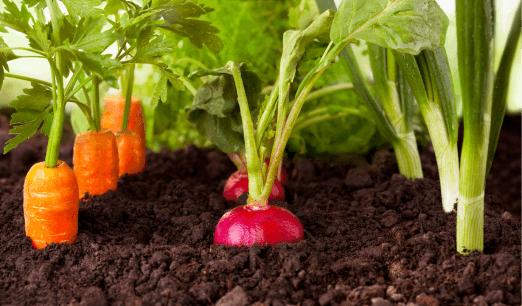Transforming Soil and Farming Practices Towards Sustainability
Sustainable agriculture is not just a buzzword; it’s a necessity for the long-term well-being of our planet. As we grapple with issues like climate change, soil degradation, and food security, the need to turn our attention towards sustainable farming practices has never been more urgent. In this article, we’ll explore the techniques and approaches that can help us transition from conventional, resource-intensive farming to a more sustainable and environmentally friendly model.
1. Soil Health is Key
The foundation of sustainable farming lies in the health of our soils. Soil is not just a medium for growing plants; it’s a complex ecosystem teeming with life. Sustainable farming begins with practices that enhance and preserve soil health.
a. No-Till Farming: One crucial technique is no-till farming, which involves planting crops without disturbing the soil through plowing. This technique reduces erosion, minimizes carbon release, and conserves moisture, leading to healthier, more resilient soils.
b. Cover Cropping: Planting cover crops during fallow periods helps protect and nourish the soil. Cover crops prevent erosion, improve soil structure, and enhance nutrient retention. They also support biodiversity by providing habitat for beneficial insects and microorganisms.
c. Crop Rotation: Regularly changing the type of crop grown in a specific area can break pest and disease cycles and improve soil health. Different crops have varying nutrient demands and contributions, which can be used strategically to promote soil balance.
2. Precision Agriculture
Modern technology allows farmers to be more precise in their farming practices. This reduces waste, optimizes resource use, and minimizes the environmental impact of farming.
a. Soil Testing and Monitoring: Regular soil testing allows farmers to tailor their fertilizer application to the specific needs of their crops. By avoiding over-application, this technique prevents nutrient runoff and pollution of water sources.
b. GPS and Drones: Global Positioning Systems (GPS) and drones can be used to monitor fields and apply inputs such as fertilizers, pesticides, and water with high precision, minimizing waste and environmental harm.
c. Data Analytics: Advanced data analytics tools can help farmers make data-driven decisions regarding planting, harvesting, and resource management.
3. Agroforestry
Agroforestry is the practice of integrating trees, shrubs, and other perennial plants into farming systems. This approach has multiple benefits for sustainable farming.
a. Biodiversity: Agroforestry enhances biodiversity by providing habitat for various species of plants and animals, which can be beneficial for pest control and pollination.
b. Soil Health: Trees and other perennial plants help to stabilize soil, reduce erosion, and improve water retention. Their roots can also enrich the soil with organic matter.
c. Climate Change Mitigation: Trees absorb carbon dioxide and release oxygen, making agroforestry a valuable tool in the fight against climate change.
4. Organic Farming
Organic farming principles prioritize sustainability by avoiding synthetic chemicals and promoting environmentally friendly practices.
a. Chemical-Free Farming: Organic farming eschews synthetic pesticides, herbicides, and fertilizers, reducing the environmental impact and safeguarding soil and water quality.
b. Crop Diversity: Organic farms often emphasize crop diversity, which can enhance pest and disease resistance and improve overall soil health.
c. Animal Welfare: Many organic farms incorporate livestock into their systems, using their waste as valuable organic fertilizer.
5. Water Management
Efficient water use is essential for sustainable farming, especially in regions facing water scarcity.
a. Drip Irrigation: Drip irrigation systems deliver water directly to plant roots, reducing water wastage.
b. Rainwater Harvesting: Collecting rainwater for agricultural use can reduce reliance on freshwater sources and enhance resilience in drought-prone areas.
c. Water Recycling: Treating and reusing agricultural wastewater can help reduce water pollution and promote sustainable water use.
The transition to sustainable farming practices is not only environmentally responsible but also essential for food security and the well-being of future generations. It involves nurturing soil health, adopting precision agriculture, integrating agroforestry, embracing organic farming principles, and managing water resources efficiently. By implementing these techniques and promoting sustainable farming practices, we can build a more resilient and eco-friendly agricultural system that benefits both the environment and our communities.






Comments are closed